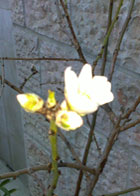Tu b'Shevat: What Sorts of Trees are We?

Deuteronomy 20, discussing the laws of war, and in particular siege, forbids the cutting down of fruit trees, adding, in an ambiguous and tantalizing phrase, "ki ha-adam etz ha-sadeh." The words can be translated as a simple if enigmatic statement ("for man is a tree of the field") or as a question (in the rendering of the JPS Torah,"are trees of the field human?"). The classical commentators were likewise divided. The Talmud, reading the phrase as a statement, is moved to offer a prototype of a human "tree of the field": a virtuous sage, a worthy teacher and role model. Rashi, the great exegete of medieval Franco-Germany, understood it as a question. People make war, but why should trees suffer?
The Zohar has its own take. God, the ultimately inaccessible divine person, is knowable in this world through the tree of life: that is, the Torah. Indeed, humans, trees, Torah, God—all mirror each other, each in its own way bridging heaven and earth, maintaining itself while branching out and bearing fruit. This perspective lives on in modern Jewish thought and literature.
Zionism gave still another response. The human tree is the new Jew, who in planting trees advances settlement of the Land and figuratively undoes the rootlessness of exile. It was Zionism more than anything else that called into being the contemporary holiday of Tu b'Shevat, which in modern times bears multiple connotations, including environmentalist ones, but in ancient times was simply a convenient date for gathering tithes on fruits.
So what sorts of trees are we humans? The great 17th-century moralist Maharal of Prague had an answer: upside-down trees, whose spiritual roots lie in heaven above, and whose far-reaching branches and twigs form us earthlings below.
Comments are closed for this article.




